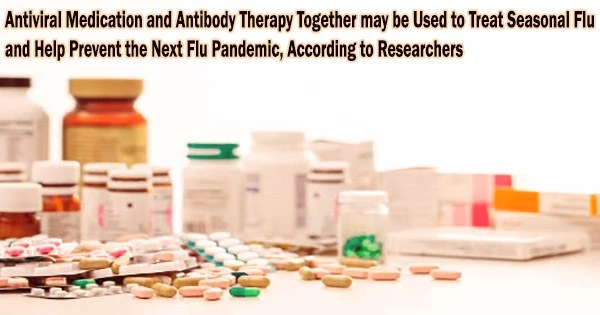When combined with antibody treatments, a class of well-known antiviral medications may be able to treat seasonal flu while also helping to avert a flu pandemic, according to McMaster University researchers.
Since many years ago, doctors have recommended antiviral medications like Tamiflu to treat flu symptoms in patients at high risk of significant complications.
Researchers discovered that when these treatments were combined with antibody therapy, the results were superior to either strategy used independently because both the pharmaceuticals and the antibodies were more potent and much more successful at killing infected cells.
According to the researchers, the findings, which were just published in the journal Cell Reports Medicine, may help develop novel strategies for safeguarding vulnerable populations including the elderly and children in the event of an impending influenza pandemic.
“Antibody therapies were used to treat COVID-19, and in theory, they could be used to treat flu as a new therapeutic approach,” says Matthew Miller, a lead author of the study and director of McMaster’s Michael G. DeGroote Institute for Infectious Disease Research.
“We really need to have better strategies to protect people from flu pandemics because right now we don’t have anything,” he says. “Our seasonal vaccines don’t protect us. And we’ve learned that we can’t make them quickly enough to vaccinate everybody if a new pandemic were to emerge.”
For more than ten years, Miller and his team have researched broadly neutralizing antibodies that protect against a variety of respiratory infections. In their urgent search for a universal flu vaccine, they are looking into how these antibodies might be used to provide protection against all flu strains.
The mechanism behind how the drug and the antibody therapies work together is very unique and surprising. This approach allows us to both disable a crucial component of the virus, and also boost our own immune system to better track down and prevent the spread of the infection.
Ali Zhang
Antibodies and antiviral medications were combined by researchers for the investigation, which was carried out on mice. They discovered that the medications enhanced the ability of the antibodies to combat viruses. Antibodies function by attaching to the surface of an infected cell and then activating our immune system to destroy the cell before the virus can spread.
“The mechanism behind how the drug and the antibody therapies work together is very unique and surprising,” explains Ali Zhang, lead author of the research paper and a doctoral student in McMaster’s Department of Biochemistry and Biomedical Sciences. “This approach allows us to both disable a crucial component of the virus, and also boost our own immune system to better track down and prevent the spread of the infection.”
The urgent need for effective therapies for elderly patients was evident during the height of the COVID-19 pandemic. According to the Public Health Agency of Canada, people over the age of 65 accounted for a staggering 80 percent of pandemic-related deaths across the country in 2020.
“One of the places where antibody-based therapies could be particularly useful is nursing homes, which are at very high risk of flu outbreaks. The elderly are the poorest responders to vaccines, yet need them the most,” says Miller, who is also a principal investigator with Canada’s Global Nexus for Pandemics and Biological Threats, which is based at McMaster.
Additionally, according to researchers, utilizing a combination therapy may lengthen the effectiveness of already available antiviral medications because viruses are less likely to develop resistance to them when administered alongside an antibody therapy.
Because of its propensity to spread through pandemics, influenza poses one of the most serious risks to global health.
In just over 100 years, at least five pandemics have occurred, which include the Spanish Flu of 1918-19, killing roughly 50 million people 3 to 5 percent of the world’s population at the time.





